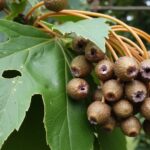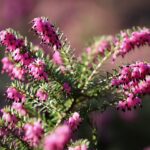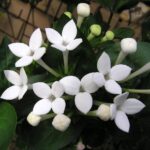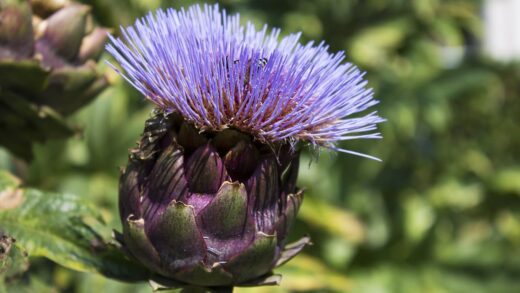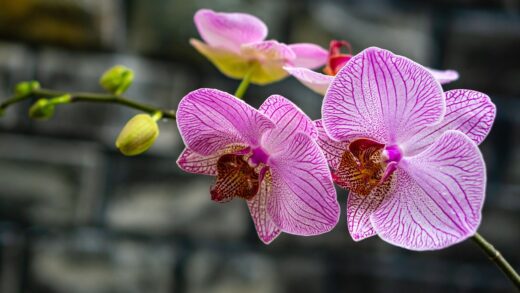Understanding the water requirements of the wild service tree is fundamental to its successful cultivation, from a young sapling to a mature, stately specimen. This native woodland tree has evolved to be resilient and relatively self-sufficient once established, but its needs change dramatically throughout its life cycle. Proper irrigation practices, especially in the early years, are crucial for developing the deep and extensive root system that will sustain the tree through periods of drought later in life. Overwatering can be just as detrimental as underwatering, leading to root rot and other health issues. This article provides a detailed exploration of the wild service tree’s relationship with water, covering its natural tolerance, the specific needs of newly planted trees, long-term irrigation strategies, and how to identify and respond to signs of water-related stress.
Natural water needs and drought tolerance
In its native habitat, the wild service tree is typically found in well-drained soils within mixed deciduous woodlands, often on limestone slopes. This environment has shaped its water needs and led to the development of a remarkable degree of drought tolerance in mature specimens. The tree develops a deep taproot along with an extensive network of lateral roots that are highly efficient at seeking out moisture from a large volume of soil. This robust root system is the key to its resilience, allowing it to withstand seasonal dry spells without suffering significant stress. Understanding this natural adaptation is crucial for informing a sensible irrigation strategy in a garden setting.
The tree’s physiology also contributes to its ability to manage water effectively. Its leaves have a slightly leathery texture which can help to reduce water loss through transpiration, especially when compared to trees with softer, more delicate foliage. During periods of extended drought, a healthy, established tree may prematurely drop some of its leaves to conserve moisture, a natural survival mechanism. It is important for the gardener to recognize this as a sign of stress, but also as an indication of the tree’s inherent ability to cope with challenging conditions without necessarily requiring immediate, heavy irrigation.
This natural drought tolerance means that for a fully established wild service tree, supplemental watering is rarely needed. In most temperate climates, natural rainfall is sufficient to meet the needs of a mature tree. Providing extra water is generally only necessary during exceptionally prolonged and severe droughts, particularly on lighter, sandy soils that have poor water retention. In these specific circumstances, a deep and infrequent soaking is far more beneficial than regular, shallow watering, as it encourages the roots to remain deep in the soil profile.
It is this inherent resilience that makes the wild service tree an excellent choice for sustainable and low-maintenance planting schemes. By selecting a species that is well-adapted to the local climate and potential for summer droughts, gardeners can create beautiful landscapes that require fewer resources. The goal of any irrigation plan should be to support the tree’s natural tendencies, helping it to establish the deep root system it needs to become self-sufficient, rather than creating a dependency on artificial watering. This approach not only conserves water but also fosters a healthier, more robust tree.
Watering newly planted trees
The period immediately following planting is when the wild service tree is at its most vulnerable and has the greatest need for consistent moisture. During this establishment phase, which typically lasts for the first two to three growing seasons, the tree’s root system is still confined to the original root ball and the immediately surrounding soil. It has not yet grown deep or wide enough to access moisture from a larger area, making it entirely dependent on the water available in its immediate vicinity. Therefore, a regular and attentive watering schedule is absolutely critical for its survival and successful establishment.
For the first growing season, a newly planted tree should be watered deeply at least once a week, and potentially more frequently during hot, dry weather. The aim is to deliver enough water to thoroughly saturate the entire root ball and encourage roots to venture out into the surrounding soil. A slow, deep soak is the most effective method. This can be achieved by letting a hose run on a slow trickle at the base of the tree for an extended period, or by using a soaker hose or drip irrigation system. This ensures the water penetrates deeply into the soil rather than running off the surface.
The amount of water required will vary depending on soil type, temperature, wind, and rainfall. A good way to check if the tree needs watering is to feel the soil a few inches below the surface. If it is dry to the touch, it is time to water. It is important to avoid both extremes; the soil should be kept consistently moist like a wrung-out sponge, but never saturated or waterlogged, as this can deprive the roots of oxygen and lead to root rot. A thick layer of organic mulch spread around the base of the tree is highly beneficial, as it helps to retain soil moisture and reduces the frequency of watering required.
This diligent watering regime should continue into the second and even third year, although the frequency can often be reduced as the tree’s root system expands. By the third year, the tree should have a much more extensive root network and will be significantly more resilient to dry conditions. The transition to less frequent watering should be gradual. The ultimate goal is to wean the tree off supplemental irrigation so that it can thrive on natural rainfall alone, fulfilling its potential as a drought-tolerant species.
Irrigation for established specimens
Once a wild service tree is considered established, typically after three or more years of healthy growth, its irrigation needs change dramatically. A mature tree with a fully developed root system is remarkably self-sufficient and in most climates will not require any supplemental watering. Its deep roots are capable of drawing moisture from well below the soil surface, areas that are not affected by short-term dry spells. This is a key characteristic of the species and one of the reasons it is valued as a low-maintenance landscape tree. Overwatering a mature tree is a common mistake that can do more harm than good.
Excessive irrigation of an established tree can lead to a variety of problems. It can encourage the development of a shallow root system, making the tree less stable and more vulnerable during droughts if the supplemental watering is discontinued. Persistently wet soil can also create anaerobic conditions, leading to root rot and making the tree more susceptible to certain fungal diseases. Therefore, it is crucial to allow the soil to dry out between watering events, should they be necessary at all. The principle should always be to water deeply and infrequently, rather than little and often.
The only time to consider irrigating a mature wild service tree is during an exceptional and prolonged period of drought. Signs of severe water stress in a mature tree include wilting leaves that do not recover overnight, premature yellowing or browning of leaves, and significant leaf drop during the growing season. If these symptoms appear during a severe drought, providing a very deep soaking can help the tree through the stressful period. This means applying a large volume of water slowly over several hours to ensure it penetrates deep into the root zone, which can extend far beyond the tree’s drip line.
In practice, this means that for most gardeners, the long-term irrigation plan for a wild service tree is simply to rely on nature. The focus of care should instead be on maintaining healthy soil. A healthy soil structure with plenty of organic matter will have a better capacity to absorb and hold rainwater, making it available to the tree for longer. Continuing to maintain a layer of organic mulch over the root zone is the single most effective action you can take to help a mature tree manage its water needs, as it reduces evaporation from the soil surface and keeps the root environment cool and moist.
Recognizing signs of water stress
Being able to correctly identify the signs of water stress, both from too little and too much water, is a vital skill for successfully cultivating a wild service tree. Underwatering, or drought stress, typically manifests first in the leaves. The leaves may appear to wilt or droop during the hottest part of the day, but if they recover in the cool of the evening, the tree is generally coping. If the leaves remain wilted overnight and into the morning, it is a clear sign that the tree is struggling to take up enough water. Other symptoms include leaves turning yellow or brown, scorching at the margins, and curling inwards.
In more severe cases of drought stress, the tree may begin to shed leaves prematurely, starting with the oldest, innermost leaves. This is a self-preservation mechanism to reduce the amount of water lost through transpiration. The tree’s growth may also be stunted, with smaller than usual leaves and shorter shoot extension. While a mature tree can often recover from a period of drought stress, it is particularly dangerous for young, establishing trees and can be fatal if not addressed promptly by providing a deep and thorough watering.
Conversely, overwatering can be equally damaging, and its symptoms can sometimes be confusingly similar to those of underwatering. The most common sign of excessive water is the yellowing of leaves (chlorosis), often starting with the lower leaves. This occurs because waterlogged soil deprives the roots of oxygen, damaging them and inhibiting their ability to absorb nutrients. The leaves may also appear wilted or limp, not due to a lack of water, but because the damaged roots can no longer supply the canopy with the water it needs.
Other indicators of overwatering include the presence of standing water around the tree’s base, soil that is constantly muddy, and a sour or rotten smell coming from the soil. The bark at the base of the trunk may become dark and soft, and in advanced cases, fungal growth like mushrooms may appear. It is crucial to distinguish between the two problems. Always check the soil moisture levels a few inches below the surface before watering. If the soil is damp, do not add more water, even if the leaves appear wilted, as the root cause is likely an excess of water, not a deficit.
Advanced irrigation strategies and conservation
For those cultivating the wild service tree in particularly dry climates or in situations where water conservation is a high priority, employing advanced irrigation strategies can be highly beneficial. Drip irrigation systems are one of the most efficient methods for watering trees, especially during the establishment phase. These systems deliver water slowly and directly to the root zone, minimizing losses due to evaporation or runoff. A properly installed drip line or ring of emitters around the base of the tree ensures that the water penetrates deeply where it is most needed, promoting a healthy, deep root system.
The use of soil moisture sensors can take the guesswork out of irrigation, ensuring that water is only applied when it is truly necessary. These devices are buried in the root zone and provide a direct measurement of the moisture content in the soil. They can be connected to an automated irrigation controller to create a “smart” watering system that responds to the actual needs of the tree rather than operating on a fixed schedule. This not only conserves a significant amount of water but also helps to prevent the damaging effects of overwatering.
Water harvesting techniques can also be integrated into the landscape to provide a sustainable source of water for your trees. Creating swales or rain gardens on contour can help to slow down, spread, and sink rainwater into the ground, passively irrigating the tree’s root zone. Directing runoff from roofs or other hard surfaces into a cistern or rain barrel allows you to store water for use during dry periods. These strategies reduce reliance on municipal water supplies and create a more resilient and self-sufficient garden ecosystem.
Ultimately, the most advanced strategy is to design a landscape that works in harmony with the natural environment and the specific needs of the plants within it. For the wild service tree, this means investing heavily in soil health. Amending the soil with copious amounts of compost and organic matter dramatically increases its water-holding capacity. A cubic meter of soil enriched with compost can hold many more liters of water than poor, compacted soil. By creating a rich, absorbent, living soil and maintaining a thick layer of mulch, you create a natural reservoir of moisture that will support the tree through all but the most severe droughts, embodying the true principles of water-wise gardening.

